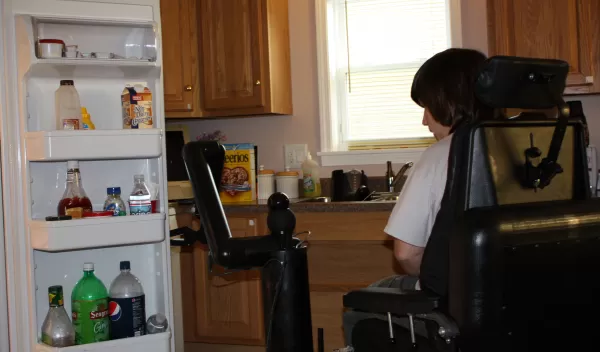
Robotic Systems Help People With Disabilities
People might be surprised to learn that about 50 million individuals in the world use, or could benefit from the use of, a wheelchair.
Wheelchairs are one of the most commonly used assistive devices for mobility, providing people with mobility in their homes and communities. While wheelchairs were once a symbol of inability and considered stigmatizing, they have evolved to be highly mobile forms of self-expression that are often fitted to each individual user.
One may wonder what science and engineering can do to improve the wheelchair, and be surprised by the answer: much has been, and remains to be, done. One of the areas in which science and engineering are making the breakthroughs of tomorrow is in applying computer modeling, rapid prototyping and robotics to create electric-powered mobility and manipulation devices. Such devices provide people with very severe disabilities--those that affect both the use of arms and legs--the ability to perform tasks with minimal assistance, or even function independently.
Computer modeling allows engineers to design and simulate such systems within a virtual space. Simulations range from mechanical and circuit design to the complex control and coordination systems needed to make all of the components work together.
One of our greatest challenges is ensuring that the powered mobility and manipulation device actually meets the user's needs, and that the science is guided by problems facing people with disabilities.
In our work, we collaborate closely with people with disabilities and incorporate them into our research and development team. These collaborators focus attention on some of the hurdles that they face and other potential uses of powered mobility and manipulation devices, such as driving on rough terrain like snow, ice, grass, sand and gravel.
For people who have limited or no use of their arms, it is equally as challenging to complete such tasks as making a sandwich, putting away clothes and shopping.
Many people would like to drive the powered mobility device in parks, on winter days or across gravel roads--tasks that are difficult and sometimes impossible with the technology of today. Likewise, people with some severe disabilities require a person to help them perform tasks that many of us take for granted, such as adjusting one's jacket. Rapid prototyping and robotics provide some promising solutions to at least some of the challenges faced by people with severe mobility and manipulation limitations, and offer hope for greater independence.
Rapid prototyping helps engineers make models and even one-off devices in a cost-effective and timely manner. This allows computer models to become physical models within days and real systems within months rather than years, accelerating the research and design process, and affording people with disabilities more opportunities to participate in the scientific process.
Robotics has traditionally focused on replacing humans in the performance of tasks to achieve greater efficiencies or to reduce human exposure to risk. In our work, the person and robot must work together in what we call cooperative control. In our cooperative control model, we have a pilot who is the actual person with a disability, a remote human assistant and the robotic system. With cooperative control, these three core units work in unison to achieve the actions desired by the pilot in natural environments.
This approach speeds deployment from the laboratory to the real world, and allows scientists and people with disabilities to learn from each other throughout the process, working towards achieving practical robotic mobility systems that safely, effectively and efficiently help people with disabilities perform the activities that they desire.
To read more about these projects, visit the Web site for NSF's Quality of Life Technology Center.
-- Rory A. Cooper, Department of Veterans Affairs & University of Pittsburgh rcooper@pitt.edu
This Behind the Scenes article was provided to LiveScience in partnership with the National Science Foundation.


